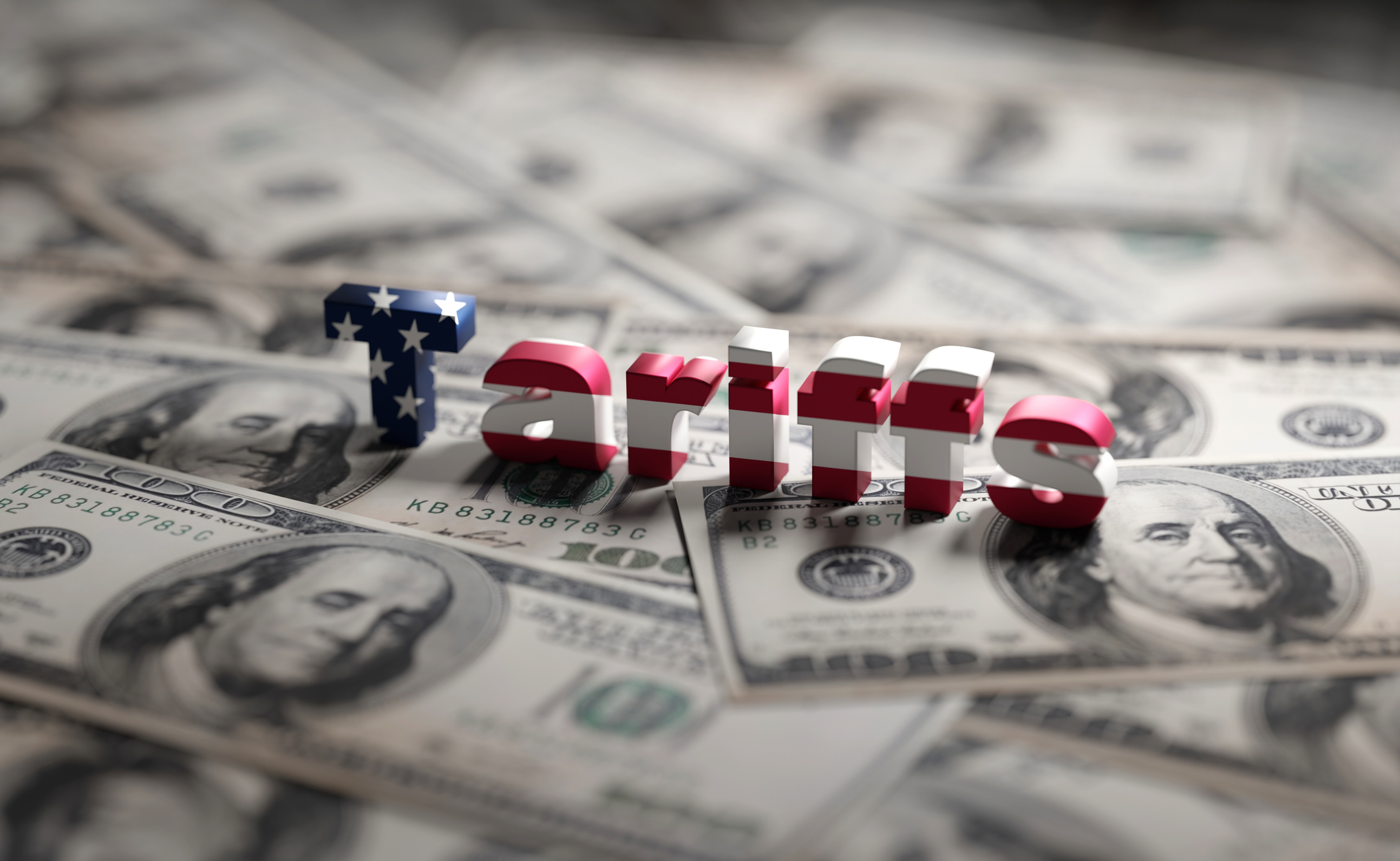Editor's note: This is a five-part series developed from Kiplinger's most tried-and-true principles. It has helped thousands to reach enduring financial success.
Investing offers the best means to achieve your long-term financial goals. But any discussion of investing must begin with this simple truth: Investing requires taking risks. Your investment success depends in part on your ability to control those risks without passing up reasonable returns.
Your task is to create a plan that suits you and stick with it. You can achieve this goal regardless of your current style of saving and investing. If you don’t want to spend a lot of time on your finances, you should create a plan that doesn’t require a lot of time. There are lots of successful investors who carefully select the assets in their portfolios so that they need to spend only a few hours each year monitoring performance. Other investors prefer to pay close attention to what’s happening with their money.
From just $107.88 $24.99 for Kiplinger Personal Finance
Become a smarter, better informed investor. Subscribe from just $107.88 $24.99, plus get up to 4 Special Issues

Sign up for Kiplinger’s Free Newsletters
Profit and prosper with the best of expert advice on investing, taxes, retirement, personal finance and more - straight to your e-mail.
Profit and prosper with the best of expert advice - straight to your e-mail.
Whichever description fits you, you can accumulate substantial sums of money by applying the following five keys to investment success. Note that these are keys, not “secrets.” There really aren’t any investment secrets. The methods employed by successful investors are well known.
Key #1: Make Investing a Habit
For most people with a small amount to start with, the best chance to acquire measurable wealth lies in developing the habit of adding to your investments regularly and putting the money where it can do the most for you.
The rewards can be considerable. Suppose you take $5,000 and put it in a savings account, where it earns a nice, safe 2.16% interest. Twenty years later you reclaim your deposit and discover that it has grown to $7,666 and change. Not bad, but you can do better. Meanwhile, your brother-in-law puts $5,000 in one-year certificates of deposit (CDs) at the same bank, with instructions to roll over the proceeds into a new certificate every 12 months.
In addition, every month he buys another CD for $100 and issues the same instructions. Over 20 years he earns an average of 3.44% interest. His nest egg: more than $44,000. That’s a lot better, but it’s not going to finance a worry-free retirement. Suppose your goal is a lot loftier than that: You’d like to have a nest egg of $250,000. You’ve got 20 years to get there and $5,000 to start. You’re willing to investigate investment alternatives that should boost your return above what you’d earn in a bank account. What’s a reasonable return to plan on, and how much will you have to contribute along the way?
Since 1926, the stocks of large companies have produced an average annual return of more than 10%. (Remember, that includes such lows as the Great Depression, Black Monday in 1987 and the stock slide that followed September 11.) At 10%, with $5,000 to start, you’ll reach your $250,000 goal if you contribute $279 a month to your investment account. With an 11% return, $235 a month will get you your quarter-million in 20 years. Less-risky plans can also work wonders. Starting from zero, putting just $50 a month into an investment that pays a compounded average annual total return of 11% for 20 years will get you a nest egg of almost $43,700. Stick to the plan for 30 years and you’ll have more than $141,500.
Another possibility is to start small and gradually increase your monthly investment as your income grows. Assume you earn an average of 10% per year. Put $50 a month into your account for five years, raise it to $100 a month for the next five, $200 a month for years 11 through 15 and $300 a month for years 16 through 20. Then you’ll have more than $87,600. Boost your monthly amount to $400 for years 21 through 25 and your fund will grow to more than $175,400.
These examples are simplified, of course, because they don’t take taxes, commissions or fees into account. But the point is this: Making investing a habit is a key to making investing a success.
[page break]
Key #2: Set Exciting Goals
Investment goal-setting is an intensely personal affair that will be guided by your own style and preferences. But if you set generalized goals, such as “financial security” or “a comfortable retirement,” you’re going to have trouble measuring your progress along the way. You may even struggle to maintain interest in the project. Vaguely defined investment goals can lead to halfhearted efforts to achieve them.
Better to set goals you can grab onto, goals that excite you. Instead of “financial security,” why not “$500,000 net worth by age 60?” Instead of “a comfortable retirement,” why not “an investment portfolio that will yield $2,000 a month to supplement my pension and social security?” Now those are real goals. You can put a price tag on each and use that as an incentive to keep up your investing discipline.
Setting investment goals is a lot like reading a map: Before you can get to where you want to go, you’ve got to figure out where you are. An easy way is to start with this worksheet.
You may have to do a little guesstimating about the value of your furniture, jewelry and so forth, but don’t spend a lot of time trying to be precise about those numbers. It’s the financial portion of your balance sheet that should concern you the most: money in savings accounts, stocks, bonds and mutual funds, real estate and the like, plus your equity in pension plans and other sources of current and future income.
Another approach is to pose a few basic questions: How much money could you raise if you were to sell everything you own and pay off all your debts? How difficult would it be to get your hands on that money? And where would that money come from? What you learn about where your money is will also influence your goal setting and the routes available to get to your goals.
There are no “right” or “wrong” investment goals. They will be influenced by your income and job security, your risk tolerance and your age. In addition, the time you have to achieve your goals should influence the kinds of investments you might consider. Most people have several goals at once.
Short-Term Goals
Suppose that a vacation in Europe is one of your goals and that you would like to go next summer. Such a short time horizon suggests that the stock market wouldn’t be a good place to invest the money you’re setting aside for the trip. The market is subject to wide swings, and you wouldn’t want to be forced to sell your stocks in a downswing just because the time had come to buy your airline tickets. Don’t put into the stock market any money that you know you will need in the next two or three years. Low-risk vehicles such as certificates of deposit, for example, that mature about the time you’ll need the cash or a money-market fund that allows you to withdraw your cash instantly by writing a check may be a better choice.
Medium-Term Goals
Maybe you’d like to buy a house or move to a larger one within three or four years. With more time, you have more flexibility. Safety is still important but you are in a better position to ride out bad times in the financial markets and take on a little more risk. For medium-term goals like these, consider longer-term CDs that pay more interest than the short-term certificates you would buy to help finance your vacation trip. You could even consider mutual funds that invest in stocks that pay good dividends but don’t tend to fluctuate much in price. That could give you high income (for reinvesting in more fund shares), a chance to ride along if the market zooms, and pretty good protection against all but a steep drop in stock prices.
Long-Term Goals
A comfortable retirement is probably the most common of all financial goals. A college education for the kids is another common goal. For long-term goals like these, you can afford to take more risk. Consider a wide range of possibilities: stocks, corporate and government bonds, and long-term CDs for diversification. Also take maximum advantage of tax-sheltered plans, such as individual retirement accounts (IRAs) and 529 college-savings plans. IRA earnings accumulate tax-deferred, and contributions may be tax-deductible. 401(k) plans provide many of the same advantages and might offer a company match that will help you reach your goal. With several years and sometimes decades ahead of you, financial assets that aren’t strictly investments also come into play: home equity, pension plans and Social Security, for example. Your goals and choices should be influenced by the size and accessibility of those assets.
Your goals are likely to change, so it’s important to reassess them annually. For instance, the kinds of growth-oriented investments that might be perfectly appropriate while you are accumulating a retirement nest egg and have a long-term horizon could be inappropriate after you retire and need income to pay the bills. Luckily, the investment universe is vast and there are plenty of resources—magazines, newspapers, books, the Internet, financial advisers—that can help you decide how to modify your portfolio as your circumstances change.
[page break]
Key #3: Don't Take Unneccesary Risks
Most people would say that risk is the chance you take that you’ll lose all or part of the money you put into an investment. That’s true as far as it goes, but it doesn’t go far enough. A more complete definition of risk acknowledges the availability of investments carrying virtually ironclad guarantees that you will get all your money back plus the interest promised you: Treasury securities or certificates of deposit in federally insured banks, savings and loans, or credit unions, for instance. Also, with all investments, even government-guaranteed ones, you run the additional risk that your return will be less than the inflation rate. In fact, savings accounts, certificates of deposit, Treasury bills, savings bonds and a handful of other government-backed investments establish a useful benchmark for measuring risk: Risk is the chance you take that you will lose your money or that you will earn less from your investment than the rate of inflation or less than the interest available at the time from insured savings certificates or U.S. Treasury–backed obligations.
To put it another way, risk is the chance that you will earn less than 3% to 4% on your money. If you can’t reasonably expect to do better than that for the risk you’re taking, then there’s no sense in taking the risk.
How Can You Control Your Risks? The pyramid is a useful visual image for a sensible risk-reducing strategy. It’s built on a broad, solid base of financial security: a home; money in insured savings accounts or certificates; plus insurance policies to cover expenses if something happens. As you move up from the base, the levels get narrower, representing the space in your portfolio is available for investments that involve risk. The greater the risk, the higher up the pyramid it goes and, the less money you should put into it.
How much should you have in savings? Three to six months’ living expenses should be your goal. Bank, savings and loan, or credit union accounts are good places to keep this money, but look for opportunities to earn more than the .25% to 1% interest these institutions tend to pay on their run-of-the-mill deposit accounts—by putting most of it in certificates of deposit, for example. You might use a money-market fund for at least part of this rainy-day money. Such funds aren’t federally insured, but they are conservative places to invest and they often pay a higher return than savings accounts.
Once you’ve built the base of your pyramid, you’re ready to move up and become an investor. One level up is the appropriate place for mutual funds that invest in low-risk, dividend-oriented stocks and top-quality government and corporate bonds. Individual stocks and bonds that you pick yourself are on the same level. Most financial experts would put investment real estate on the next level up. At the very top of the pyramid go investments that few people should try, such as penny or microcap stocks, commodity futures contracts and most limited partnerships.
How Much Risk Should You Take?
Controlling risk means more than being “comfortable” with an investment. Too many investors seem perfectly comfortable with too much risk. The basic thing to remember about risk is that it increases as the potential return increases. Essentially the bigger the risk, the bigger the potential payoff. (Don’t forget those last two words; there are no guarantees.) That might sound exciting, but turn it around: the bigger the potential payoff, the bigger the risk of losing.
Does this mean you should avoid all high-risk investments? No. It means you should confine them to the top of the pyramid—where they can never occupy a significant portion of your investment portfolio. Invest only as much as you can afford to lose because you might in fact lose it. You should also learn to recognize the risks involved in every kind of investment.
Risks in Stocks
A company’s stock could decline because the company’s revenue declines or isn’t being managed well. Or a well-managed and prosperous company’s stock could fall because investors sell millions of shares of stock of all kinds or stocks of a certain kind. That’s what happened when the dot-com bubble burst and it drove the entire market down, without bothering to differentiate the good stocks from the bad.
Risks in bonds
Bond prices move in the direction opposite to that of interest rates, rising when rates fall and vice versa. But individual bond issues can be hurt even if rates in general are falling. For example, one of the rating services downgrades its opinion of the company’s stability. A bond issue that’s paying an interest rate noticeably higher than that of other bonds with similar maturity dates is probably being forced to pay more to compensate investors for the higher risk inherent in a lower safety rating.
Risks Everywhere
Real estate values go up and down in sync with supply and demand in local markets, regardless of the health of the national economy. Gold and silver, which are supposed to be stores of value in inflationary times, have been decidedly unrewarding in times of tolerable inflation. Even federally insured savings accounts carry risks—that their low interest rate won’t be enough to protect the value of your money from the combined effect of inflation and taxes.
What is a prudent risk?
It depends on your goals, your age, your income and other resources, and your current and future financial obligations. A young single person who expects his or her pay to rise steadily over the years and who has few family responsibilities can afford to take more chances than, say, a couple approaching retirement age. The young person has time to recover from market reversals; the older couple may not.
[page break]
Key #4: Keep Time on Your Side
A penny saved is a penny earned—or so the saying goes. In fact, a penny saved may be more or less than a penny earned, depending on when it is earned and how it is saved. The reason is rooted in a concept called the time value of money (and its close cousin, opportunity cost).
Which would you rather have, $10,000 today or $10,000 a year from today? Of course, you’d choose the take the money now. Besides possessing the sure knowledge that a bird in the hand is worth two in the bush, you understand that the value of that $10,000 you have to wait a year for will be eroded by a year’s worth of inflation and a year’s worth of lost interest on the money. To put a dollar figure on it, if inflation is 4% and you could earn 5% interest in a year, the thrill of being handed $10,000 today is worth about 9%, or $900, more than the thrill of being handed $10,000 a year from today.
The time value of money works against you if you’re the one waiting to collect the money, but it works in your favor if you’re the one who has to pay. Success often lies in being able to identify the proper side of the equation. You just need to keep in mind this principle—a dollar you pay or receive today is worth more than a dollar you pay or receive tomorrow. A couple of examples illustrate why:
Paying the kids’ college bills
Your future rocket scientist faces a four-year education cost of about $450,000 when he or she enters an average-priced private college in 18 years. That’s a huge sum, but because you’re familiar with the time value of money, you know the smart thing to do is to find a way to pay those bills today, when your dollars are worth more than they will be in 18 years. Assuming a time value for the money of 10% per year—meaning you could earn that much on the money between now and the time you have to pay it—the value of the $450,000 you need 18 years from now is about $81,000. So, if you had that amount available and salted it away in an investment earning 10% a year, you’d have the bills covered. Since it’s unlikely you’ve got that amount, invest as much of it as you can as soon as you can to get the time value of money working for you, easing some of the burden when the college bills come due.
Paying off the mortgage
Failing to understand how the time value of money works can cause you to think you’re doing something smart when you may not be. For instance, you may have heard praises sung for the 15-year mortgage. Because you pay it off sooner than a 30-year loan, you pay less interest and save thousands of dollars. But the homeowner with the 15-year mortgage parts with the money sooner than the 30-year buyer, and the time value of money suggests some caution may be in order before making extravagant claims of savings. Here’s where opportunity cost—the cost of doing one thing and not another—comes into play. You need the answers to two questions: What else might you do with the extra money you’d spend on the higher monthly payments required by the 15-year mortgage? How much could it earn if you invested it in something else? Suppose it costs you an extra $200 a month to pay off the loan in 15 years instead of 30. That’s $200 a month not available for something else—investing in a mutual fund, for example. Say the mortgage rate is 5% and the mutual fund earns 10%. You could benefit from that 5% difference by putting the money in the fund instead of paying off the mortgage. That $200 a month earning 5% compounded for 15 years grows to almost $53,500. That’s your opportunity cost to pay off your mortgage early, and before you congratulate yourself about how much you’ve saved instead of taking a 30-year mortgage, you need to subtract it from your savings.
[page break]
Key #5: Diversify
There are at least three good reasons to diversify your investments:
- As the adage goes, you shouldn't put all your eggs in one basket.
- No investment performs well all the time; when one thing is down, another thing tends to be up.
- You may be able to increase your return by diversifying.
Some investors diversify by selecting a number of investment vehicles and dividing their money equally among them. For instance, they might set up a portfolio consisting of equal parts cash (money-market funds, CDs, Treasury bills), bonds, U.S. stocks, foreign stocks, and real estate. Once a year, they could adjust the mix to maintain the dollar balance, taking the gains from the winners and spreading them out among the losers so that their asset distribution stays the same.
But thinking in such terms can lure you into a false sense of permanence about what is a very fluid situation. As stock prices and interest rates go up and down, the proportions in your portfolio will shift without your lifting a finger. There will also be times when you want to shift more money into stocks, bonds or cash. It’s more realistic to think in terms of ranges rather than fixed percentages.
For example:
- Stocks: 50% to 80%
- Bonds: 20% to 40%
- Cash: 10% to 25%
A core portfolio is intended not as a hard-and-fast formula but as guidance for constantly changing investment markets. Your mix should also take into account your age, income and investment goals. For instance, as you approach retirement and need to reduce risk to better protect your nest egg, it’s natural to shift more of your assets into income-producing investments such as bonds or utility stocks and out of stocks that have long-term potential but are subject to market reversals.
Another thing about the core portfolio: “Stocks,” doesn’t necessarily mean individual shares. Mutual funds are often the best way to own stocks, although knowing how to select a promising stock will make you a better selector of promising funds as well. And “bonds,” doesn’t necessarily mean only corporate or municipal securities. Variations on the bond theme—mortgage-backed securities, for instance—can perform the same function for your portfolio, often at a more attractive return.
Wrap Up
These keys are not secrets. Nor are they guarantees. But if you pay attention to them as you make investment decisions you’ll be more likely to achieve your goals.
Profit and prosper with the best of Kiplinger's advice on investing, taxes, retirement, personal finance and much more. Delivered daily. Enter your email in the box and click Sign Me Up.
-
 How to Safely Open an Online Savings Account
How to Safely Open an Online Savings AccountOnline banks offer generous APYs that most brick-and-mortar banks can't match. If you want to make the switch to online but have been hesitant, I'll show you how to do it safely.
-
 7 Ways to Age Gracefully Like the Best Stock Photo Seniors
7 Ways to Age Gracefully Like the Best Stock Photo SeniorsAs a retirement editor, I've gleaned valuable wisdom (and a lot of laughs) from one older couple that tops the seniors' stock photo charts.
-
 My First $1 Million: Banking Executive, 48, Southeast U.S.
My First $1 Million: Banking Executive, 48, Southeast U.S.Ever wonder how someone who's made a million dollars or more did it? Kiplinger's My First $1 Million series uncovers the answers.
-
 What the Rich Know About Investing That You Don't
What the Rich Know About Investing That You Don'tPeople like Warren Buffett become people like Warren Buffett by following basic rules and being disciplined. Here's how to accumulate real wealth.
-
 How to Invest for Rising Data Integrity Risk
How to Invest for Rising Data Integrity RiskAmid a broad assault on venerable institutions, President Trump has targeted agencies responsible for data critical to markets. How should investors respond?
-
 What Tariffs Mean for Your Sector Exposure
What Tariffs Mean for Your Sector ExposureNew, higher and changing tariffs will ripple through the economy and into share prices for many quarters to come.
-
 How to Invest for Fall Rate Cuts by the Fed
How to Invest for Fall Rate Cuts by the FedThe probability the Fed cuts interest rates by 25 basis points in October is now greater than 90%.
-
 Are Buffett and Berkshire About to Bail on Kraft Heinz Stock?
Are Buffett and Berkshire About to Bail on Kraft Heinz Stock?Warren Buffett and Berkshire Hathaway own a lot of Kraft Heinz stock, so what happens when they decide to sell KHC?
-
 How the Stock Market Performed in the First 6 Months of Trump's Second Term
How the Stock Market Performed in the First 6 Months of Trump's Second TermSix months after President Donald Trump's inauguration, take a look at how the stock market has performed.
-
 Fed Leaves Rates Unchanged: What the Experts Are Saying
Fed Leaves Rates Unchanged: What the Experts Are SayingFederal Reserve As widely expected, the Federal Open Market Committee took a 'wait-and-see' approach toward borrowing costs.
-
 Fed Sees Fewer Rate Cuts in 2025: What the Experts Are Saying
Fed Sees Fewer Rate Cuts in 2025: What the Experts Are SayingFederal Reserve The Federal Reserve cut interest rates as expected, but the future path of borrowing costs became more opaque.